Sustainability

We all leave a footprint behind us. Some larger, some smaller. Even the marathon, however green and fluffy it may be, leaves a footprint.
We are the first national sports event in the Baltic region to not only assess our impact on the environment by calculating CO₂e emissions or footprints, but also compensate for our footprint by investing in sustainable and emission-reducing projects in Riga and Latvia. We also improve our production processes and engage in educating society on sustainability issues.
Our goal is to minimize the impact of the largest national sports event in the Baltic region on the environment, encouraging both the runner community and society, as well as event industry (and not only) companies and marathon partners to embrace a sustainable lifestyle.
We conducted the sustainability audit of the Rimi Riga Marathon in collaboration with Janis Brizga, a researcher and environmental expert from the University of Latvia, as part of the sustainability program Run for Future.
THREE PILLARS OF THE RUN FOR FUTURE PROGRAMME
1. REDUCTION
CO₂e footprint reduction – we have reduced the consumption and volume of production, digitized several materials required for the marathon, and used recyclable or already recycled materials in the organization.
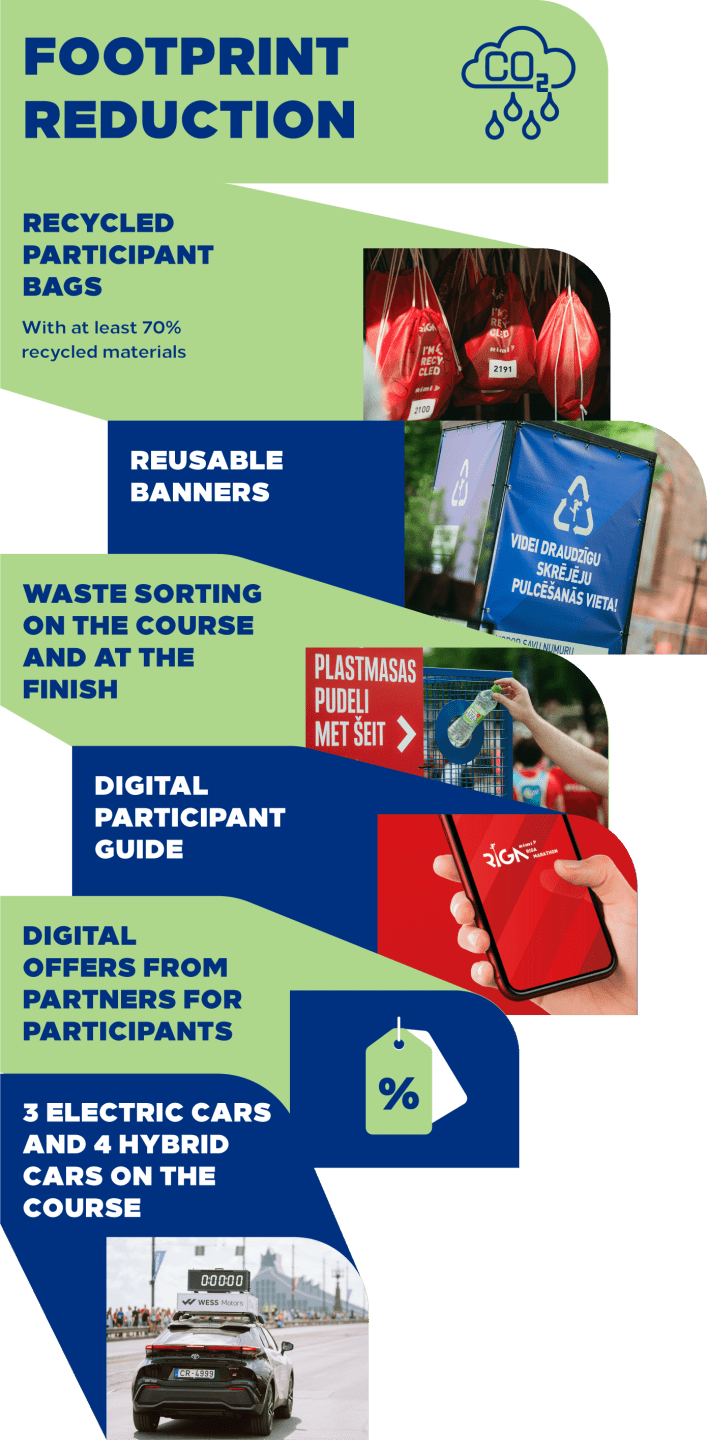
2. EDUCATION AND INVOLVEMENT
Education and involvement of the runner community in reducing footprints – we are aware that we mobilize several tens of thousands of running enthusiasts, by using various methods such as blogging, training, and videos on how to use energy points on the track, and organizing international virtual competitions, we educate participants and help them develop sustainable, environmentally-friendly habits.
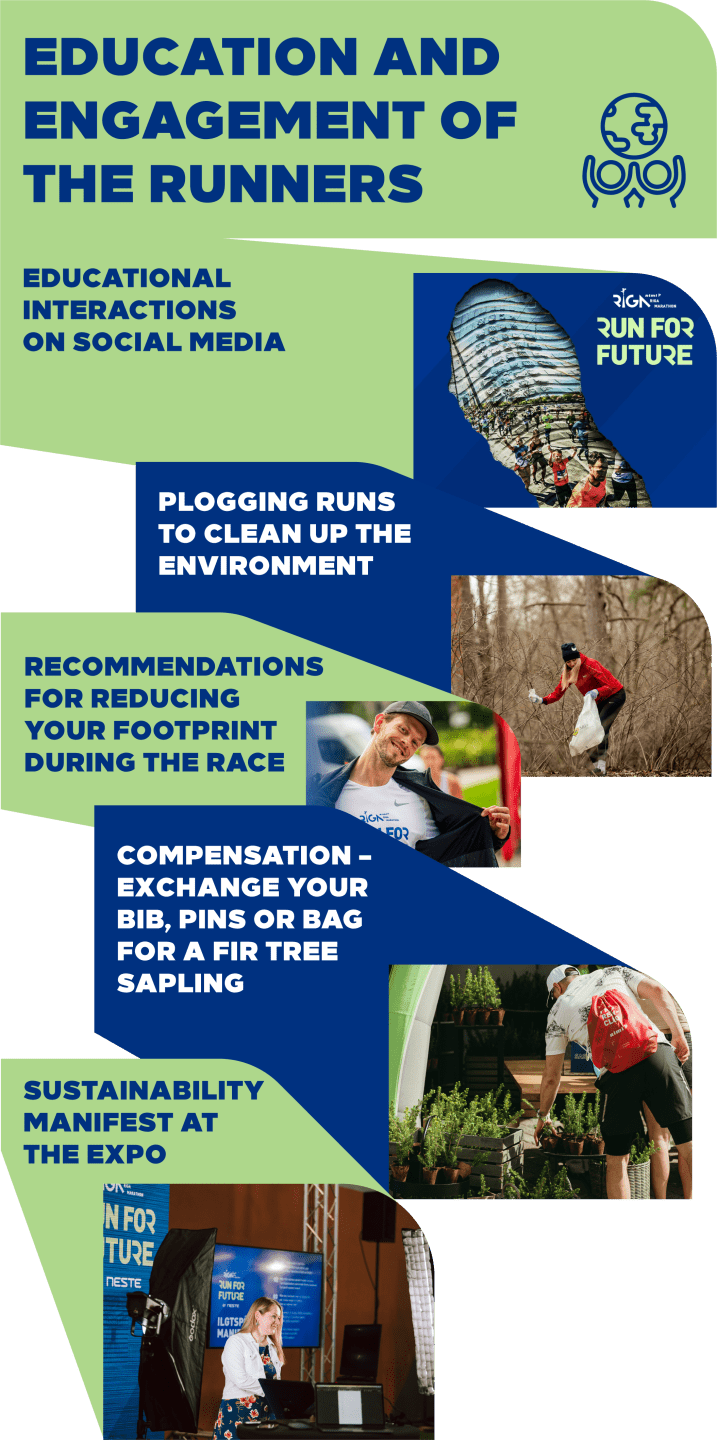
3. COMPENSATION
Compensation for created footprints – we will be the first large-scale national sports event to financially compensate for its carbon footprint, financially supporting sustainable projects in Riga and Latvia, in partnership with Riga Forests and the Riga City Council.
These initiatives are a good starting point for the implementation of further sustainability plans.
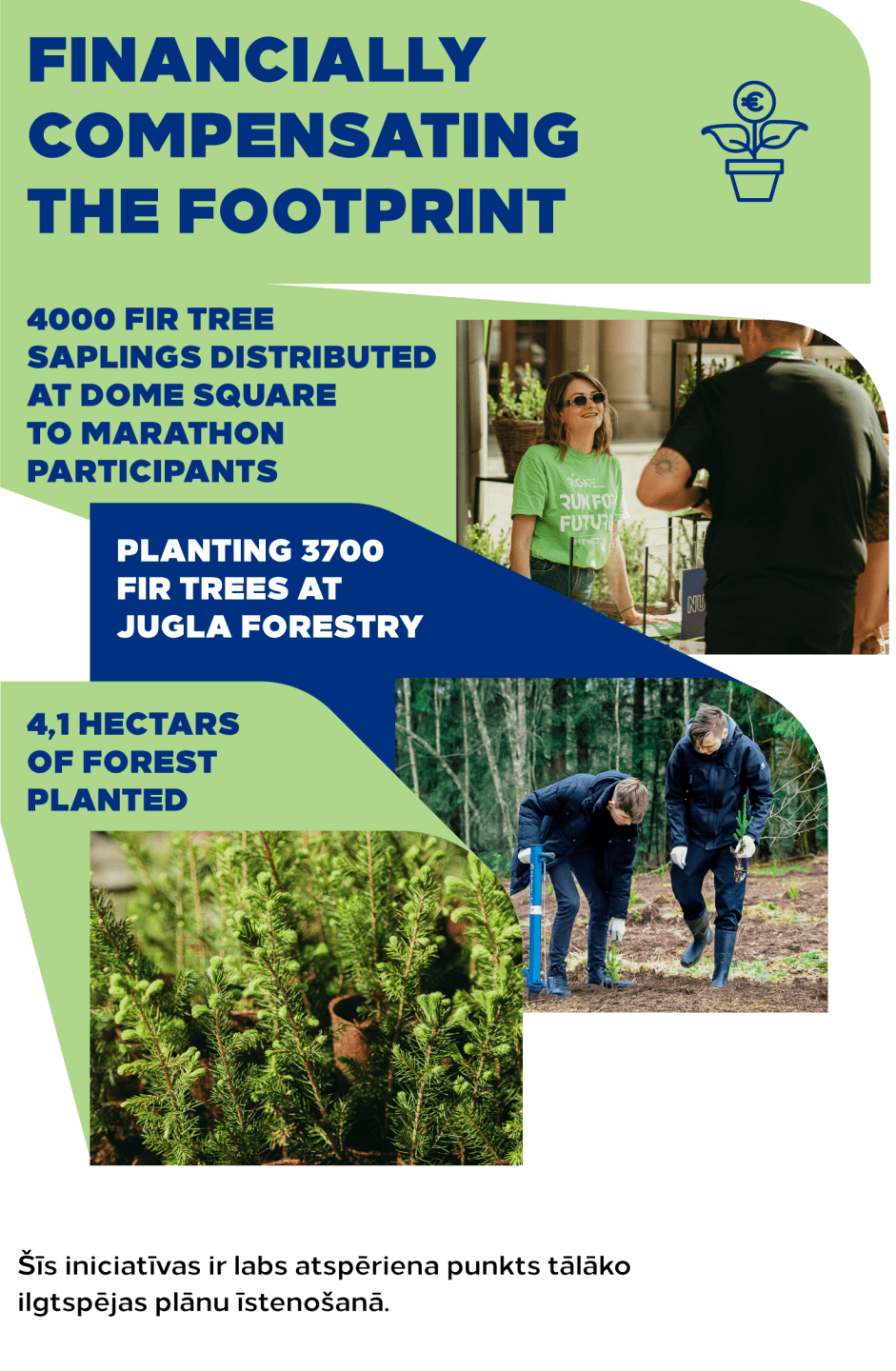
WHAT IS A FOOTPRINT?
CO₂e footprint includes the total amount of carbon and other greenhouse gas emissions directly or indirectly caused by the activities and products of a person, organization, or company*.
The footprint is measured in three scopes.
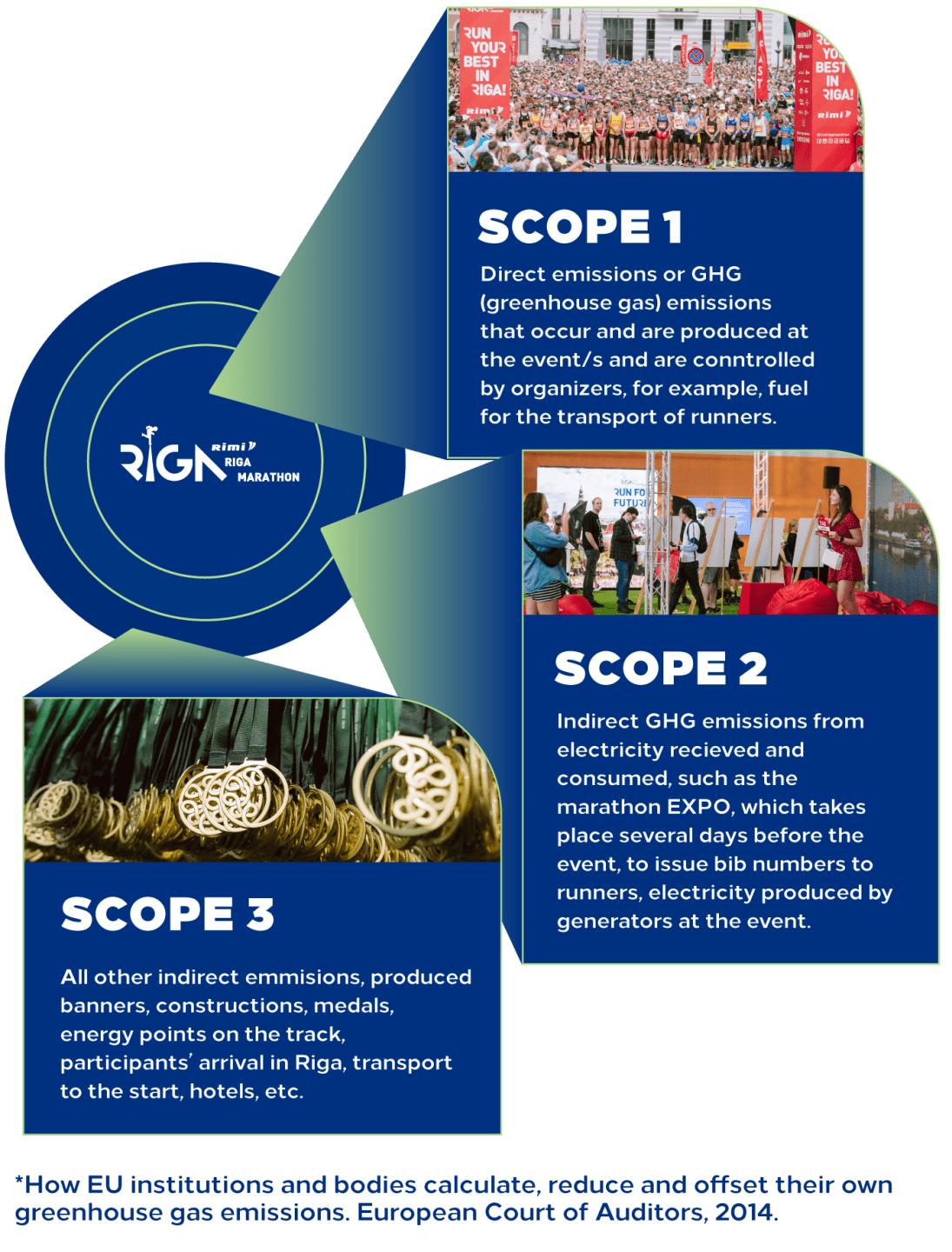
*How EU institutions and bodies calculate, reduce and offset their own greenhouse gas emissions. European Court of Auditors, 2014.
CO₂e FOOTPRINT OF RIMI RĪGA MARATHON
The first two scopes of the CO₂e footprint are mandatory to be included in the audit, the third scope is optional, as it’s considered as indirect emissions of the company or organization. In the sustainability audit of the marathon, we included all three scopes, as we assume responsibility for the emissions of our participants and partners, without whom the marathon is unimaginable.
HOW WAS THE AUDIT CONDUCTED?
We carefully audited ourselves, involved the participants of the Rimi Riga Marathon in a sustainability questionnaire, revealed their habits, and surveyed all partners involved in the organization of the marathon.
AUDITED AREAS
- Participants’ arrival at the Rimi Riga Marathon
- Energy consumption during EXPO and the marathon
- Participants’ materials and event decoration
- Waste generated during the marathon
- Communication with participants and their involvement
CARBON EMISSIONS CREATED BY THE RIMI RIGA MARATHON

THIRD SCOPE
Transport leaves the largest percentage footprint in the third scope, which is calculated based on several factors, including the arrival of participants in Riga and their journey to the EXPO and the start.
The rest of the third scope is made up of accommodation, energy points on the track (bananas and apples), catering for volunteers and elite runners, electricity at EXPO, at the start and finish, materials produced for the marathon such as medals, bibs, banners of marathon partners and others, waste created at the start, on the track, and at the finish, as well as cargo transport, which transports medals, participant bags, water, and other services for runners.
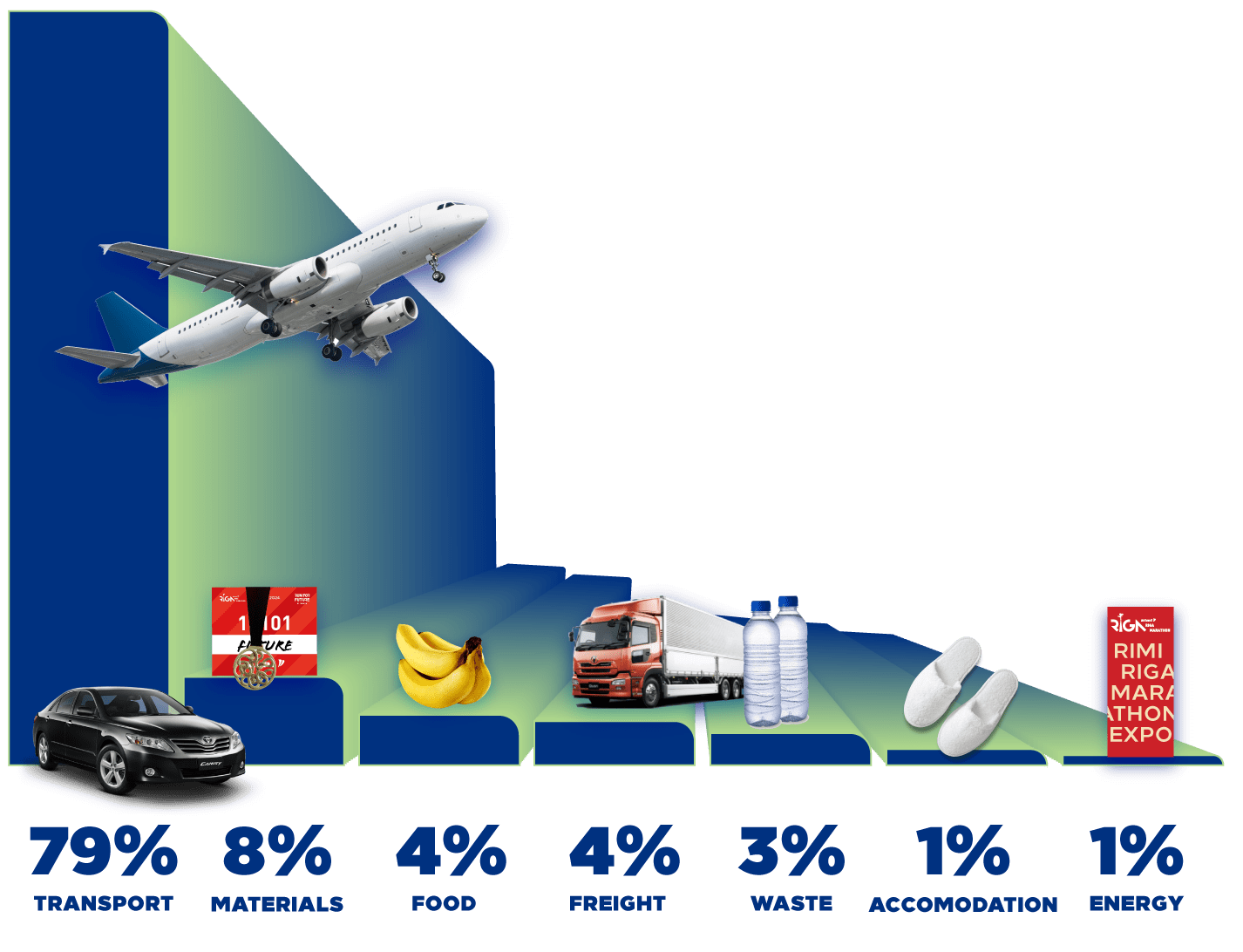
HOW DO PARTICIPANTS ARRIVE AT THE START?
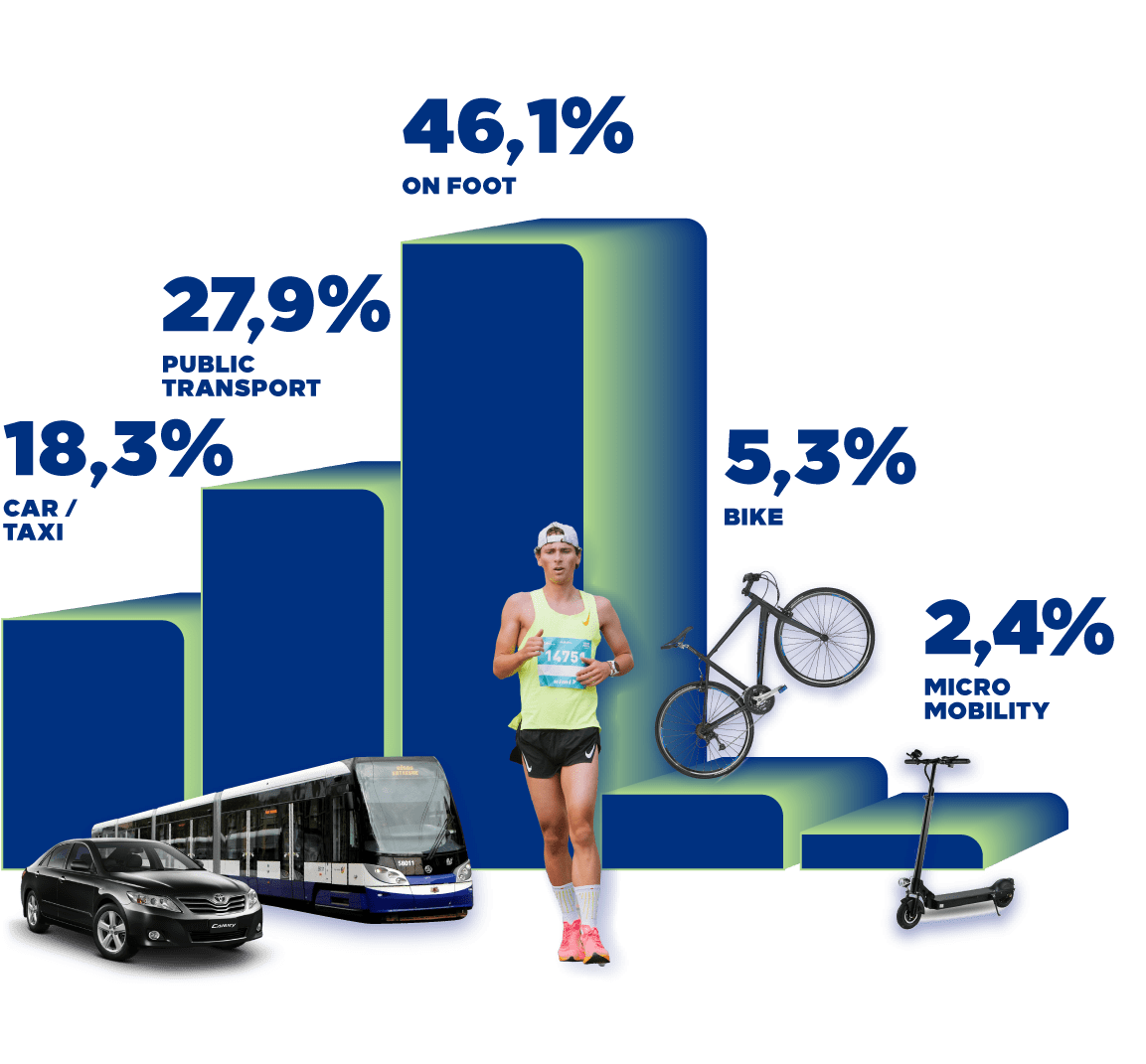
HOW DO PARTICIPANTS ARRIVE AT EXPO?
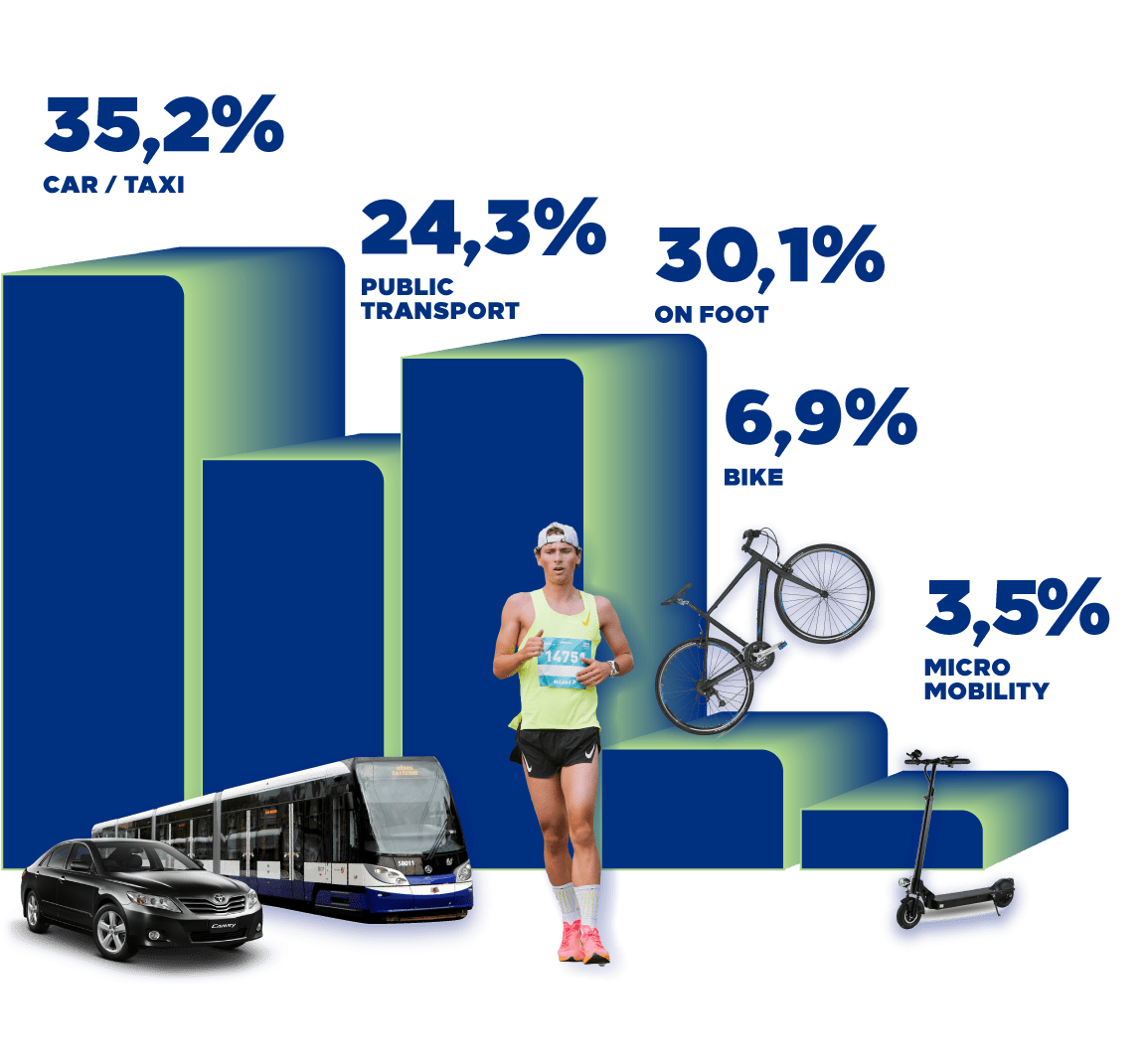
COMPENSATION OF MARATHON FOOTPRINT
With the number of international participants increasing by more than 60%, the carbon footprint of the 2024 Rimi Riga Marathon has grown 1.5 times, reaching 342 CO₂e tons. To offset this, as part of the marathon’s sustainability program “Run for Future,” organizers and participants have together planted nearly 8,000 spruce trees in the Riga region and across Latvia—compensating for the marathon’s 2024 carbon footprint fivefold. While the overall carbon footprint of the Baltic’s largest running event remains relatively small, the Rimi Riga Marathon stands out as one of the few events globally—and the only one in Northern and Eastern Europe—to fully offset its emissions by investing in carbon reduction projects.
The 2024 marathon carbon footprint calculations once again reveal that the largest share—more than 80%—comes from participant transportation, including international participants traveling to Latvia and local travel to event venues in Riga.
Notably, per-participant passenger transport usage in the city decreased by 6% in 2024. According to Rimi Riga Marathon survey data, more participants opted for environmentally friendly transportation methods—such as cycling, walking, or public transport—to reach the marathon start and EXPO.
FUTURE STEPS OF THE SUSTAINABILITY PROGRAM
Knowing the extent and origin of the carbon footprint created by the marathon, we see our future sustainability direction as follows:
- WE COMPENSATE for the marathon’s carbon footprint in full by investing in environmentally sustainable and emission-reducing infrastructure projects in the city of Riga, doing good for our city rather than investing in developing countries (a common practice worldwide).
- WE ENCOURAGE discussions more frequently about ways to be greener and think and act more sustainably. One of the most debated sustainability topics suggested for participant discussion by the Rimi Riga Marathon organizers was the hypothetical possibility of replacing physical medals with digital ones – survey results clearly showed that participants aren’t yet ready for such a radical innovation, with around 80% of survey respondents expressing a clear preference for physical medals for all finishers.
- WE EDUCATE the running community:
a) on more thoughtful use of transport to/from the start/finish, to/from EXPO, considering that transport has the largest footprint,
b) by offering the opportunity for each participant to determine their own footprint and compensate for it financially, for example, during the registration process.
- WE CONTINUE TO REDUCE our own footprint: by identifying environmentally unfriendly organizational and production processes and taking steps to reduce or eliminate them.
ABOUT THE SUSTAINABILITY INITIATIVE RUN FOR FUTURE
Run for Future is the Riga Marathon’s sustainability program. Through the implementation of this program, we become the first mass sports event in the Baltic region to not only assess our impact on the environment by calculating CO₂e emissions, but also compensate for our footprint by investing in sustainable and emission-reducing projects in Riga and Latvia. Within the framework of the program, we will continue to improve the production and organization processes of the marathon, as well as engage in the education of society (primarily the running community) on and around sustainability issues. Our goal is to minimize the impact of the largest national sports event in the Baltic region on the environment, and to encourage the running community, society, event industry companies, and marathon partners to embrace a sustainable lifestyle.




